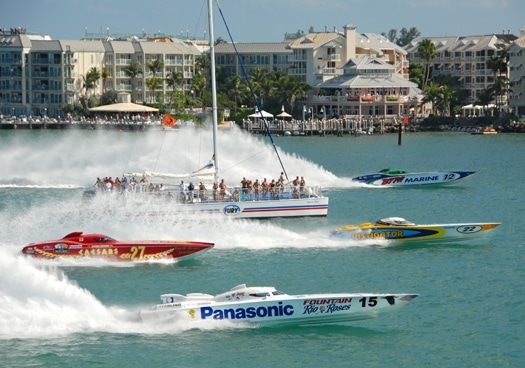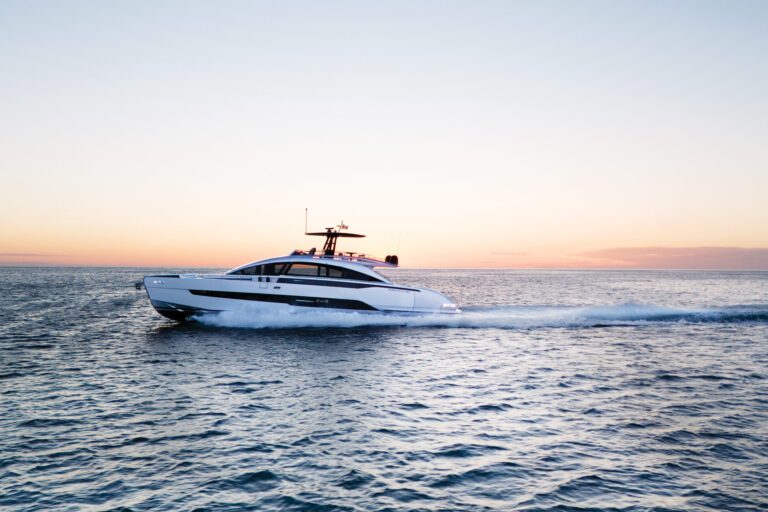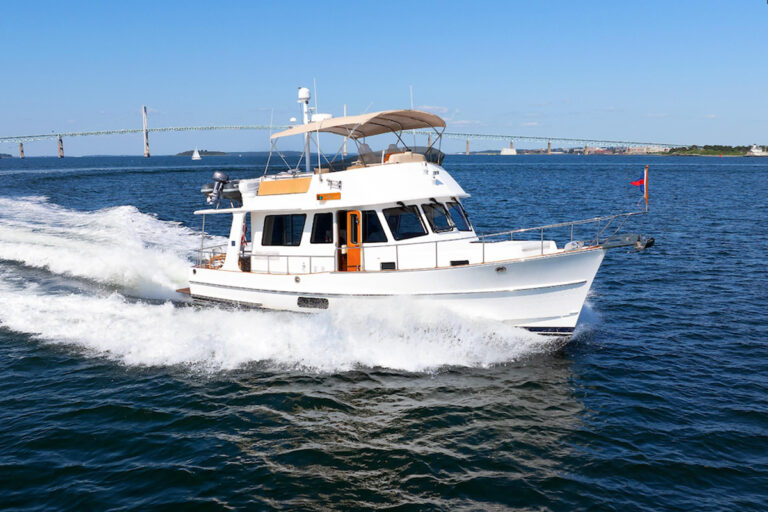
ytgoct15enewsspin525.jpg
Though many boat owners sweat the choice between various engine options for a new boat purchase or repower, a more important decision is that of the reduction gear and propeller. It is not the engine, but rather the propeller that pushes the boat-a vital point that is too often overlooked in the ongoing search for ever more speed. Linking that prop to the correct gear is also an essential part of the equation.
It is not unusual for an owner to be willing to spend hundreds of thousands of dollars for new or upgraded engines, but then balk when told that he’ll need to shell out another 10 or 20 grand for a pair of custom props to optimize the installation. After all, those off-the-shelf stock props look a lot like the custom ones. They’re available in the same diameter and pitch, so what can possibly justify the difference in cost?
How about another 3 to 5 knots at the top end? How about a fuel burn that’s 10 to 20 percent less at a given speed? How about a cruising range that’s 10 to 20 percent greater? How about noticeably less noise and vibration, and a better running trim angle? All of these are possible with an optimum pair of propellers, driven through a gear with a properly specified reduction ratio.
There is a lot more to the design of a propeller than just diameter and pitch. Diameter is the distance from the tip of one blade to the tip of the opposing blade. Pitch is the theoretical distance that a prop would travel in one revolution if it screwed through the water. Equally important is the lesswell- known factor of blade area. It is the total surface area of all the propeller blades, so it is dependent on the diameter, the number of blades, and the shape of the blades.
Blade area is important because of boat weight. Today’s yachts, carrying more and more creature comforts, are heavier than comparably sized yachts of the past. For these heavily loaded yachts, more is better when it comes to blade area. Increased diameter is one way to achieve that, but with it comes increased draft, not a welcome compromise. Propeller tunnels in the hull bottom are one way to fight that problem, but there are other choices as well. Going from three blades to four, five, six, or even seven is another option. Changing the shape of the individual blades is another choice. A blade that resembles an elephant ear delivers a lot more blade area than one reminiscent of a bunny ear.
Increased blade area also opens up another possibility, that of using a higher reduction ratio (deeper gear). Reduction ratio is the difference between the speed, in rpm, of the engine and of the propeller. For an installation with a 2400 rpm engine and a 2:1 reduction ratio, the propeller will turn 1200 rpm at full power. Increase the reduction ratio to 3:1, and the prop will turn only 800 rpm. Why does this matter? It’s hidden in the arcane minutiae of marine engineering, but for today’s heavy yachts, a slower turning propeller will usually deliver considerably higher propulsive efficiency, thus more speed and better fuel economy. Of course, such a reduction change means that the propeller needs more pitch for the same boat speed, and more blade area to deliver the horsepower into the water, and that most often means a custom propeller.
Also mentioned earlier were the side benefits of reduced noise and vibration. Noise and vibration are frequently the result of propeller cavitation, a power-robbing phenomenon that puts your horsepower into boiling the water under the boat rather than into pushing your boat forward. Bubbles, or cavities, are formed in the water, but soon collapse with explosive force onto the props, rudders, struts and hull bottom. Noise and vibration are the result, and actual damage can result in the form of metal erosion, often referred to as pitting.
Propellers can also be skewed-sweeping the blades back like the wings of a jet fighter-to reduce vibration further. The cross-sectional shape of the blades can be changed to deliver a better foil shape, varying from hub to tip for better efficiency. Adding rake (tilting the blades aft) can help lift the stern of the boat, much like trim tabs, to level out a boat that rides bow-high.
Go for the right prop, whether stock or custom, and you’ll never regret it.





